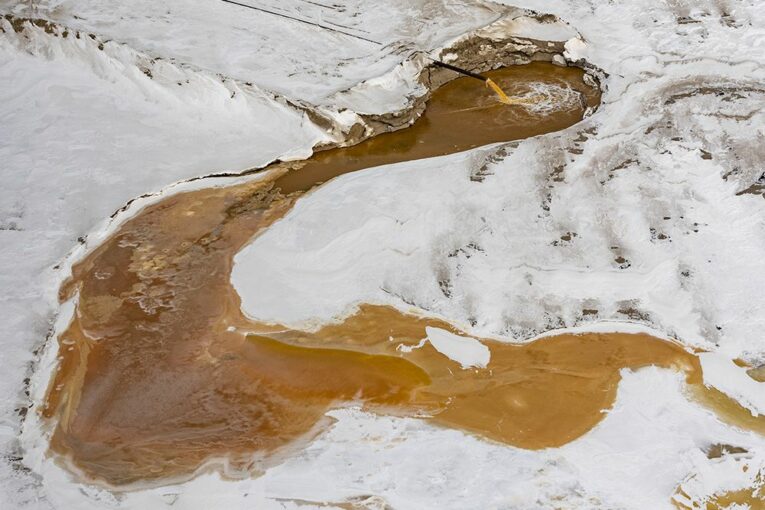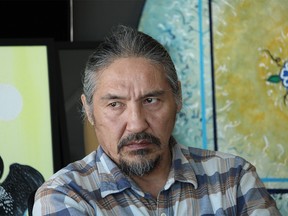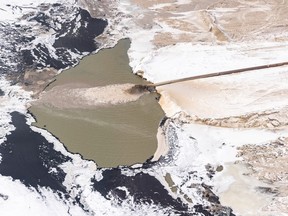
[ad_1]
Federal MPs conducted hearings on Monday into the spill and seepage of industrial wastewater at the Kearl oilsands mine, but it was a provincial agency that found itself in the crosshairs of the national debate — the Alberta Energy Regulator.
The opening day of hearings by the parliamentary committee on the environment and sustainable development into the spill at the Kearl project — operated by Imperial Oil — heard from a number of leaders from nearby First Nations and Metis communities about its effect.
Community leaders spoke about how they first learned of the seepage of wastewater at the site many months after it was discovered last year, and how they weren’t informed of the issue until February.
They also spoke about their underlying concerns about the management of oilsands tailings ponds, the need for greater consultation with Indigenous communities and a growing mistrust toward the provincial energy regulator.
“One of the clearest lessons from this crisis at Kearl is it has reconfirmed that the AER is a captured regulator that is simply not a trusted partner in protecting federal interests in our community,” said Billy-Joe Tuccaro, chief of the Mikisew Cree First Nation.
The committee hearings in Ottawa were called as questions have swirled around the response by Imperial and the AER, along with the provincial and federal governments, to two separate releases of wastewater at the oilsands mine over the past year.
Last May, officials with Imperial Oil spotted discoloured wastewater — containing arsenic, hydrocarbons and dissolved iron — that seeped from its external tailings area at the mine, and notified the province’s energy regulator.
The Calgary-based integrated petroleum producer told seven communities about the initial discovery, but didn’t properly inform them about it. It has since apologized for its communication.
Recommended from Editorial
-

Indigenous communities call for regulatory overhaul after oilsands tailings leak
-

Alberta waited a month to declare emergency response to oilsands releases: document
-

Investigation into Kearl leak communications welcomed by Alberta environment minister
In late January, about 5.3 million litres of wastewater overflowed from a process water drainage pond at the oilsands mine, which led the AER to issue an environmental protection order (EPO) on Feb. 6, and nearby communities to learn of the initial seepage.
The company has stated that released fluids didn’t enter any waterways, and there haven’t been any effects on drinking water or wildlife.
Last week, the AER said independent third-party tests earlier this month confirmed the ongoing presence of hydrocarbons and naphthenic acids in a water body on the edge of the Kearl lease, but there’s no indication of any change in drinking water quality and no adverse effects to wildlife or fish.
“We have people who are scared to drink their water,” Tuccaro told the committee.
“We are simply asking for certainty — certainty that these leaking tailings ponds will be fully cleaned up and that no contaminants that may pose any risks to our health and livelihoods will reach our traditional foods and drinking water.”
Chief Allan Adam of the Athabasca Chipewyan First Nation (ACFN) called it “absurd and appalling” that information about the initial seepage wasn’t disclosed for several months.
He believes First Nations should be part of environmental review panels for projects in the area, instead of being asked to make submissions and give evidence to such bodies.
“The AER in Alberta is a joke. A complete joke,” he told MPs.
“I’m asking for a seat at the table to make the decisions; either we give the green light, or we give nothing.”

Imperial Oil CEO Brad Corson will appear at the committee on Thursday. AER chief executive Laurie Pushor has also been invited to appear at the hearings this month.
Officials with the regulator listened to Monday’s hearings. Indigenous leaders “spoke courageously and openly on their concerns with a great number of important matters, including industry impacts of oilsands on their lands and peoples,” Pushor said in a statement.
“I will be personally appearing before the committee in Ottawa on April 24 to address these questions to the best of my ability.”
The regulator has maintained that under provincial rules, it’s the company’s duty to report such releases to affected communities.
Last month, the AER unveiled plans to hire a third party to examine issues around the notification of Indigenous communities and other stakeholders, pledging results will be made public “to demonstrate that the regulator is both credible and trustworthy.”
There’s a lot of bridge-building to be done.
“I’m not expecting much change from a captured regulator to be honest . . . It is imperative that we have federal oversight of these issues that impact people,” said Daniel Stuckless, interim director of administration for the Fort McKay Metis Nation.
“I think you need to scrap it and build it back.”
Russell Noseworthy, who works for the Fort McMurray Metis Local 1935, wondered what actions the AER will take to improve communications with communities in the region.
“There’s a question around the neutrality of the regulator in Alberta. And so we need assurance that the regulator is regulating properly,” he said.

Federal MPs also expressed dismay and took the opportunity to fire a few shots toward the province’s energy regulator.
“As an Albertan, I’m sickened by the testimony that I’ve heard today,” said Heather McPherson, the MP for Edmonton Strathcona.
Calgary Centre MP Greg McLean noted the AER is a quasi-judicial body set up by the province and he suggested its reporting mechanisms aren’t clear.
“Public notice is one thing, but getting directly involved with the communities that are affected would have been much more effective,” he said.
“This is obviously a breach of a system, a breach of communication — something that hasn’t gone right here.”
That’s abundantly clear.
Now, it’s time to hear from the AER leadership about what went wrong, and how it’s going to address these mounting concerns.
Chris Varcoe is a Calgary Herald columnist.
[ad_2]
You can read more of the news on source
